Menu
You can manage your membership and billing method by clicking here
Terms of Service
Privacy Policy
Copyright © 2025 Office of Immigration Australia, a private company registered in Australia. All Rights Reserved.

Checking membership status...
 EXCLUSIVE MEMBERS ONLY ACCESS
EXCLUSIVE MEMBERS ONLY ACCESSTo access this month’s edition & Member’s only resources, enter your registered email address.



Exclusive Australian Immigration News, Updates & Opportunities
November 2023
This bulletin is for members only, and provides our members with month to month updates on Australian immigration policy changes and consequential opportunities. Opportunities are found via federal and state government policy shifts for the demand and supply for certain occupations.
This bulletin will keep you up to date so that you do not have to employ expensive immigration lawyers to provide you with monthly research.
November 2023 has arrived, and Australia’s population has hit 26.5 million people thanks to a post-pandemic migration boom!
New data from the Australia Bureau of Statistics shows that Australia’s population has grown by 2.2 per cent in the 12 months to March 2023, with 81 per cent due to an influx of migration.
In Financial Year 23, net overseas migration surged to a historic 490,000, which is 63% higher than the previous record set in Financial Year 09.
This net overseas migration trend is expected to continue into 2024 as Australia needs an ongoing stream of working-age migrants like never before!
In this month’s ‘Federal News‘, the recent release of the 2023 Intergenerational Report shows the critical role migration plays in sustaining the health of Australia’s ageing nation and the importance of long-term planning to strengthen the country’s migration system. The report is of growing status as the continued influx of migration appears to be crucial, thanks to recent data from the Australian Bureau Of Statistics that shows there were over 432,000 unfilled job openings across 28% of all businesses in May 2023.
Also, in this month’s federal news, we discuss Parent Visa options in Australia and which Parent Visa could be best.
In this month’s ‘State News’, skilled workers residing offshore remain eligible to be considered for ALL State and Territory nominations! Please view the State Migration Section of this month’s bulletin for all State and Territory program updates and opportunities available!
In this month’s ‘Economic News’, Australia needs millions more people and is getting there fast as new government data reveals that Chinese migration to Australia is on track to top pre-pandemic levels, owing to improved economic relations, job vacancies and a boom in real estate.
In other economic news, we take a closer look at the town of Mandurah in Western Australia, as it has just been crowned with Australia’s ‘Top Tourism Town Award for 2023’.
In this month’s ‘Student News’, Australia is implementing new rules that prevent international students from enrolling in two courses simultaneously during the first six months of their main course. This change aims to crack down on education providers that exploit the simultaneous enrolment policy to encourage students to switch institutions.
Also, in this month’s student news, we discuss why Australia is becoming a new favourite destination for Indian women to pursue higher education.
All this and much more in the November issue of The Australian Immigration Bulletin! Let’s take a deeper look at what has happened so far and what is planned for the remainder of November 2023 in Australian Immigration so that you can start planning!
All members now have FREE access to an online IELTS English Platform and course to practice, study and improve their English and IELTS score. The IELTS exam is one of the key recommended exams you will need to take in order to Apply for Skilled Migration to Australia and the better your results, the higher points you will get when submitting an expression of interest. The advanced English and IELTS platform will allow all members to practice Mock IELTS Exams, learn cutting edge tips and gain a greater understanding of how to achieve a Band 9+.
All members also have access to “ImmiConnect” which is now available in the member’s area. ImmiConnect is the Office of Immigration Australia’s Employer Sponsored program which allows overseas workers to receive job interview invitations from Australian employers, when job opportunities come available.
The program aims to bring globally mobile, highly-skilled and specialised individuals to Australia who can fill critical areas of need.
ImmiConnect is exclusive to active Australian Immigration Bulletin Members only. You must be a current Australian Immigration Bulletin Member to be eligible to receive job interview invitations.
So if you are interested in receiving these invitations, please sign up for FREE by Clicking “ImmiConnect” and adding your name and email address.

*2 WINNERS DRAWN EVERY MONTH:
Current round: September 2023 – January 2024 (10 winners/prizes in total)
There is always a winner, and the next one could be you!
The winners of the October 2023 Immigration Prize Giveaway were drawn at 10am AEST on 1st November 2023.

Congratulations to the October 2023 winners! You have been sent a confirmation email with details on how to claim your prize!
The next 2 lucky winners will be drawn at 10am AEST on 1st December 2023.
As of 6th July 2022, people entering Australia do NOT need to provide evidence of Covid-19 vaccination status. Additionally, people leaving Australia will NOT be asked to provide evidence of their vaccination status. Unvaccinated visa holders do NOT need a travel exemption to travel to Australia. It is however important to remember that airlines, vessel operators and other countries may have specific requirements that travellers need to comply with.
Please see the list of vaccines that are recognised by the Australian government for travel purposes here.
Penrith Panthers have produced one of the great all-time NRL performances to seal the biggest comeback in grand final history……. Read more
This Bulletin and its contents is for general information purposes only and should not be used as a substitute for consultation with professional advisors.
As legislation and travel requirements are constantly changing, we strongly recommend obtaining advice on your individual situation from a Registered Migration Agent.
Please click here to book a consultation with one of our Registered Australian Migration Agents, located in Australia.
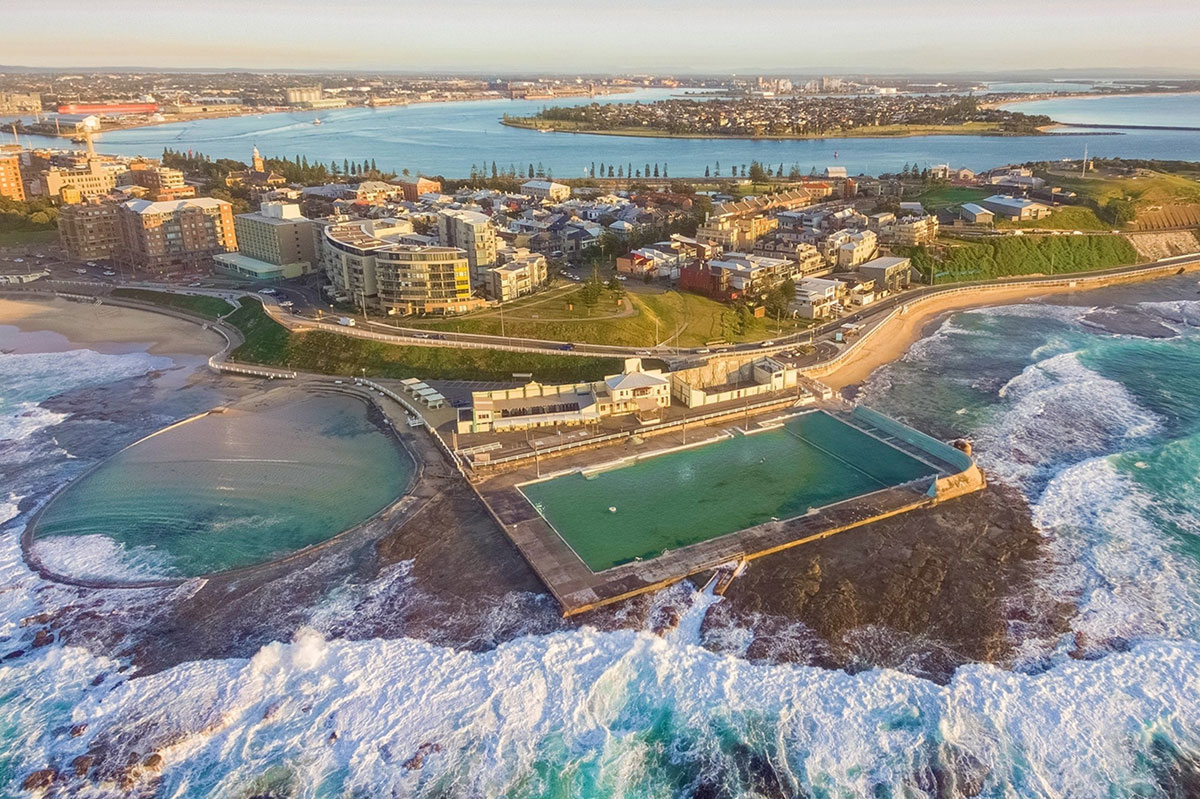
Newcastle, New South Wales
The Results of the August 2021 census were made public on 12th July 2022, and revealed that Australia has become a majority migrant nation, as the census data shows for the first time that more than 50 per cent of residents were born overseas or have an immigrant parent. Last year’s census counted nearly 25.5 million people, including 1 million new residents.
Australia’s 2023-24 Migration Program has been carefully designed to boost the social and economic outcomes that meet Australia’s needs. In fact, the migration programme was first launched in 1945 following the aftermath of World War 2. Given this long history, it is worth understanding how it works. The Australian Immigration Bulletin exists to help explain this in more detail.
As we’ve entered the 11th month of the year, join us for a look at the latest news and developments in the world of Australian Immigration!
We asked those who have established themselves with skilled jobs to share their experience and tips for a career in Australia.

We spoke with Prisciliana, a skilled migrant and an engineer currently working for a private company.
Can you tell us a little about you?
I am a dedicated professional with a strong background in civil engineering, roads supervision and maintenance, and project control. She is also an Environmental technologist (Water and Sanitary Sewer Analysis). Highly responsible and well-practised in converting management demands into desired results through prioritizing and organizing tasks.
What was your first job?
I started at IHG as an Administrative Officer, helping the Procurement Engineer to implement a new maintenance system.
What did you like and dislike about this job?
I love to come back to work with challenges that make it possible to think and use engineering skills. However, I dislike being at the workshop and have to understand mechanical issues.
What was the biggest challenge, and how you deal with it?
My biggest challenge was when they give me a manager position, and I was afraid about my English. I was pretty sure that I could handle the new place, but I felt insecure about my accent. I had a long talk with my boss, and he was very willing and helped me a lot with my ‘English issue’.
How did you find out about it?
I was in a pub and started a conversation with one unknown. This guy knew many people who work with civil engineers and talked about me to his friends. And one of his friends sent me an email inviting me for a chat.
How did you apply?
I went to this informal meeting, and we talked a lot about roads surfacing.
How did you convince them you had the skills to do the job?
During this conversation, he noticed that I had a lot of experience. Although I always studied roads surfacing in Australia, this helps me know and understand what he was saying about his company.
What did you learn about yourself doing this job?
I learn that I am capable of doing anything that I want. I become more confident, and even with “not perfect” English, I can deal with my employees and solve my daily problems at the company.
What tip would you give job seekers from other backgrounds eager to get their first job in Australia?
Never give up! If English is a big issue for you, do your best and show how capable and proactive you are.
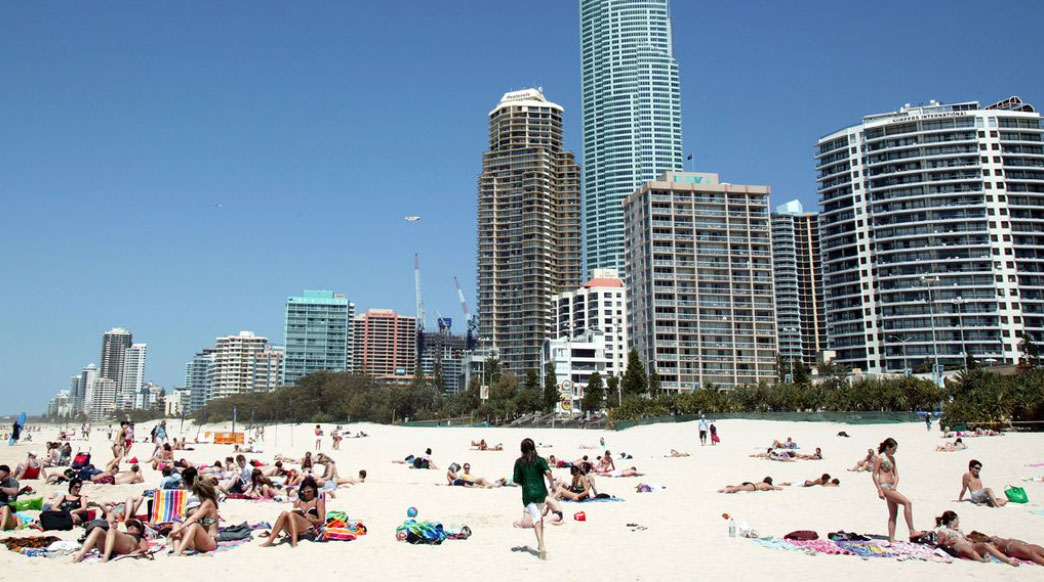
Australia’s population has hit 26.5 million people thanks to a post-COVID-19 pandemic migration boom, new data from the Australia Bureau of Statistics (ABS) shows.
The nation’s population grew by 2.2 per cent in the 12 months to March 2023, with most of this (81 per cent) due to an influx of migrants.
Meanwhile, Australia’s birth rate dropped 3.4 per cent, while deaths rose 7.9 per cent.
Excess deaths due to COVID-19 contributed to an increase in the death rate, according to the ABS.
Western Australia is the fastest-growing state (up 2.8 per cent), followed by Victoria (2.4 per cent) and Queensland (2.3 per cent).
Globally, Australia is the sixth largest country in the world by land mass, but ranks a lowly 55th by population, behind Niger and Cameroon and just ahead of North Korea.
It has the fourth lowest population density in the world, with an average of just 3.35 people per square kilometre.
Australia’s population is predicted to exceed 40 million, with the care sector to boom!
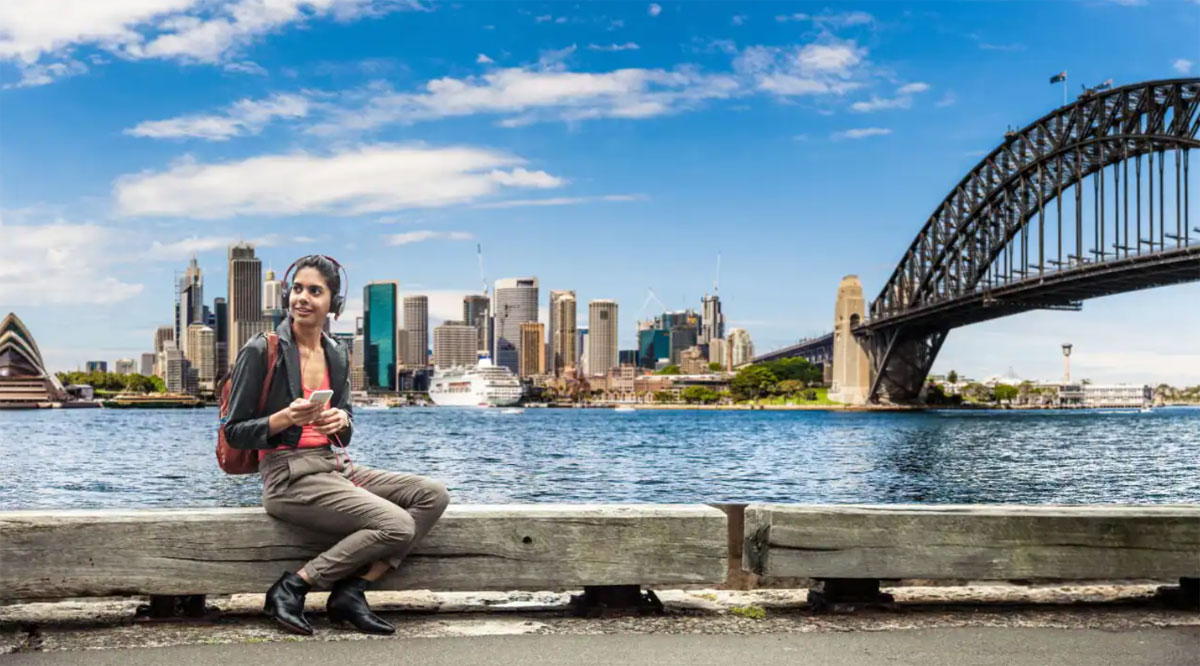
Australia’s economic prowess is supported by migration!
In FY23, net overseas migration (NOM) in Australia surged to a historic 490,000. Oxford Economics highlights the current level is 63% higher than the previous record set in FY09.
A -15% cut in annual migrant intake in 2019, followed by a pandemic-induced exodus of migrant workers and students, had left the local economy in severe shortage of skilled labour. The relaxation of pandemic restrictions, the pent-up demand since 2020, and the depreciation of the Australian Dollar have all been cited as possible contributors to the current situation.
With Australian Bureau Of Statistics data reporting over 432,000 unfilled job openings across 28% of all businesses in May 2023, an influx of labour may seem like a welcome development. However, the surge in NOM could exceed 800,000 in two years according to a recent estimate by Jarden.
Despite the presence of a highly effective and strict immigration control program, the issue of migration is becoming a contentious issue in Australia. Economic and demographic realities play a critical role in this rather paradoxical situation.
In this deep dive, we take a closer look at the net positives and negatives of the current immigration policies and trends in the Australian economy.
Migration by the Numbers in Australia
According to the 2021 Census, 28% of Australians were born overseas; 20% (one in five) have one or both parents who were born overseas. More than 50% of all Australians have at least one parent who is an immigrant. The comparable figures for the US are 12% and for the UK 16.8%.
Since 1980, Australia has welcomed more than 4.7m foreigners. Between 2010 and 2019, over 190,000 permanent visas (for skilled workers, their partners, and parents) were issued each year, along with nearly a quarter million student visas.
After a short-lived reduction in numbers by the government during the pandemic, the number of visas issued under the permanent Migration Program has returned to pre-pandemic levels. Offshore student visa applications have also surged, with a 71% increase reported in Q2 2023 over the same quarter from 2019.
Another significant cohort is that of skilled workers who arrive under temporary worker visas. In 2021, there were 95,000 such workers in Australia, along with 654,000 New Zealand citizens (under special category), and around 31,000 working holiday makers, according to the latest official data.
The current spike in migration is expected to be short-lived with a projected NOM of 375,000 in 2024, followed by a fall to 250,000 by 2026, as projected by Oxford Economics.
The Fiscal Impact of Skilled Migrants on Australia
In 2021, the Treasury released a paper on the economic contributions of skilled migrants, explained under the Fiscal Impact of New Australians (FIONA) model. According to the stats from 2018-19, migrants from the Skill stream had a fiscally positive impact of $127,000 per person over the average Australian population.
These individuals account for 61% of the permanent migrant population. Partner visa holders, accounting for 22% of the migrant cohort, had a fiscal impact that is comparable to the regular population. Only parent visa holders had a lower impact and they accounted for just 4% of the cohort.
In aggregate, the FIONA model estimates the positive aggregate lifetime fiscal contribution of the 2018-19 skilled permanent migrant cohort will be $20bn more than the contribution of a similar-sized cohort of the Australian population.
The lower age of the immigrant population is the single biggest driver of fiscal impact. Skilled young migrants in the age group of 25–35 are more likely to be in higher-paying jobs for a longer period, make more purchases, and pay more taxes.
Overseas students contributed an average of $40bn each year to the local economy before covid-19, and around $25bn in 2022. Around 28% also use post-study work rights and make further contributions to the domestic economy, with 16% eventually becoming permanent residents.
Temporary Migration in Australia
Apart from permanent visa holders, Australia has a workforce of nearly 2m temporary migrants. They include individuals on student visas, New Zealand citizens, and temporary skilled workers.
Certain industries with higher exposure to migrants enjoy a net positive impact from increased immigration. The impact could be through increase in aggregate demand (supermarkets, telecom), or a rise in labour supply (mining and healthcare services).
According to McKinsey, migrants in Australia have contributed over $330bn to the national GDP between 2000 and 2014. By the middle of this century, migration will increase the Australian population by 14m to 38m, contributing $1.6trn to the national GDP and generating 5.9% in GDP per capita growth.
The Per-Capita Reality of the “Australian Miracle”
Between 1991 and 2020, Australia maintained a nearly 30-year streak of no “technical” recessions – two or more consecutive quarters of negative GDP growth. In reality, the economy has witnessed at least three recessions in that period – in 2001, 2006, and 2018.
According to the Federal Reserve Bank of St. Louis, the rapidly rising population, fuelled in part by immigration, is what kept the Australian economy in its growth mode. Even during the 2008 Global Financial Crisis, the Australian GDP growth was sustained by record levels of immigration.
In 2023, the Australian economy is on the cusp of a recession if we take into account the -0.3% fall in per capita GDP in the June Quarter of 2023. The seasonally adjusted GDP growth was at 0.4%, representing a seventh straight rise in quarterly figures since 2020.
As household consumption remains weak and consistently high-interest rates create a cooling effect on domestic demand, much of the growth in 2023 is driven by net exports, investment, and the return of students, who add an estimated $29bn to the local economy.
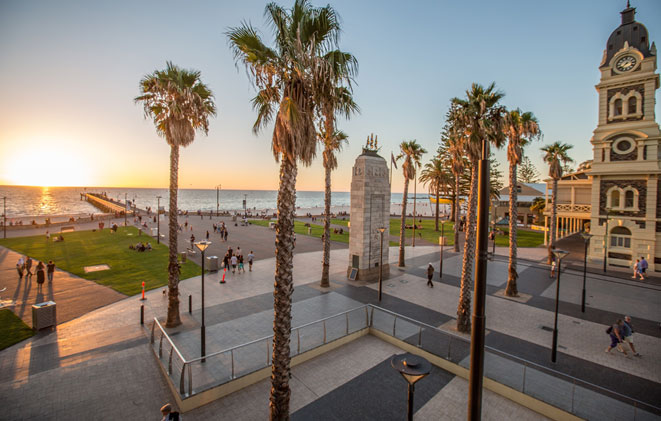
The recent release of the 2023 Intergenerational Report (IGR) shows the important role migration plays in sustaining the health of Australia’s ageing nation and the importance of long-term planning to strengthen the country’s migration system.
SSI, a non-profit-organisation providing human services to around 50,000 people a year, said the projections from the IGR reaffirm the pressing need to implement policies that harness the full potential of newcomers, especially as the nation looks forward into the future.
“Taking proactive steps to implement the 2023 Migration Review’s recommendations, such as streamlining visa types and qualification recognition processes will be critical to bolstering our nation’s growth and sustaining key workforces, like the care economy,” said Yamamah Agha, General Manager of Newcomers, Settlement, and Integration at SSI.
The IGR predicts the share of Commonwealth government spending on healthcare, aged care, the NDIS, defence, and debt-related expenditures will increase from one-third to one-half.
The report also outlines that successfully navigating this evolving terrain will require a comprehensive approach, one that involves leveraging the economic and workforce potential of migrants settling into Australian society.
“Welcoming newcomers is not enough; we need to develop pathways and active measures that enable their complete participation and engagement within Australian society,” said Yamamah.
“Migrants and refugees already living in Australia are currently a largely overlooked workforce which if harnessed could inject billions into the economy and fill critical skill shortages, according to our Billion Dollar Benefit report. By removing the barriers skilled migrants are facing in achieving full economic participation now, we can set Australia up for success in the future.”
Drawing from the IGR’s projections, the Treasury anticipates a decline in population growth to 0.8% by 2062-63, with a stable long-term estimate of 235,000 net overseas migrants arriving in the country annually.
As the percent of working age Australians declines, the effectiveness of the country’s migration systems will play a pivotal role in supporting nation’s growth.
“As the nation grapples with the challenges presented by an ageing population and evolving economic priorities, implementing the recommendations drawn from the Migration Review’s is paramount in harnessing migrants’ full potential and securing Australia’s long-lasting prosperity.”
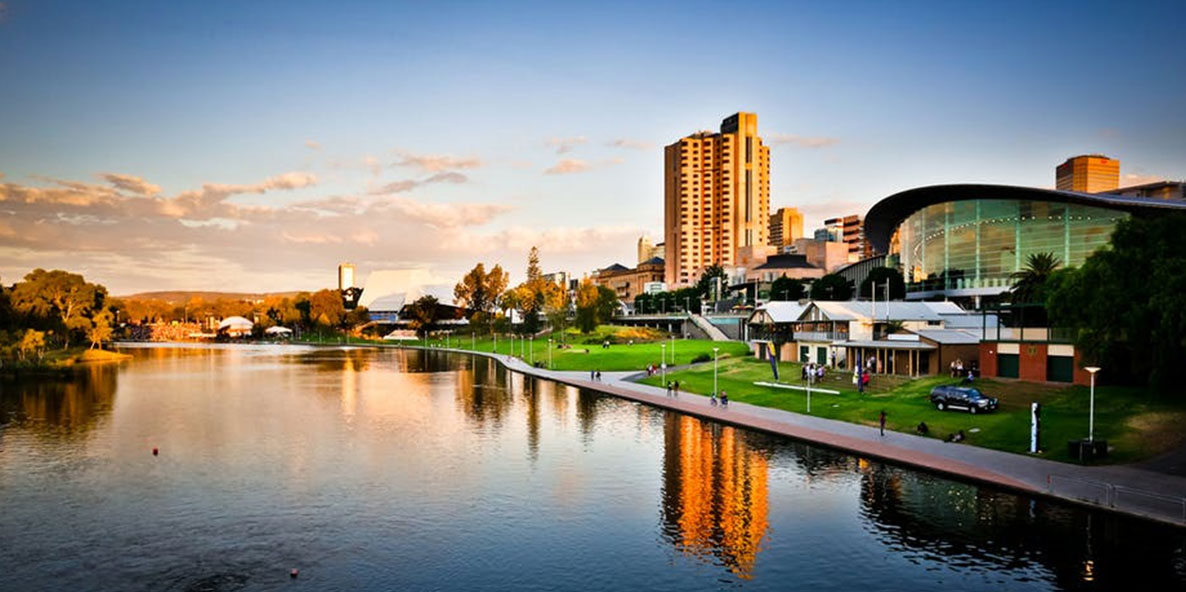
South Australia has opened its migration program for 2023-24, extending invitations to both onshore and offshore skilled workers from more than 250 occupations. Visa conditions and procedures for offshore applicants remain unchanged, but onshore applicants will now shift to a Registration of Interest (ROI) process.
Onshore applicants
The South Australian government is introducing a Registration of Interest (ROI) process to onshore skilled workers.
According to the Skilled & Business Migration portal, the ROI process is introduced under the General Skilled Migration Programme (GSM) to manage strong demand from potential applicants living and working in the state.
“This means potential applicants must submit a ROI and be invited to apply for state nomination by South Australia. Potential applicants cannot apply for state nomination directly,” the portal said.
This change brings South Australia in line with all other jurisdictions, except the Northern Territory, a government spokesperson said.
“Experienced overseas workers with skills in high demand in South Australia, such as Trades and Construction, Defence, Health, Education, Natural and Physical Science and Social and Welfare Professionals will be targeted through invitations to apply for South Australian nomination,” the portal said.
Offshore Applicants
There are no new changes for offshore applicants. The process for offshore applicants remains the same, with the state to invite candidates to apply for nomination via Expressions of Interest that is submitted in SkillSelect.
There are over 290 applications open to offshore skilled workers. The government said it is in search of highly skilled overseas workers who can contribute to the state’s fast-growing industries and projects of national priority.
For applicants that are offshore and seeking to move to South Australia, they will first be required to submit an Expression of Interest (EOI) through SkillSelect and select South Australia as their first preferred State or Territory. Once this is submitted, the South Australian Government can view the application and consider inviting you for a Skilled Nominated (subclass 190) or Skilled Work Regional (subclass 491) visa.
The SA government has advised that they will be assessing candidates on merit considering the following factors:
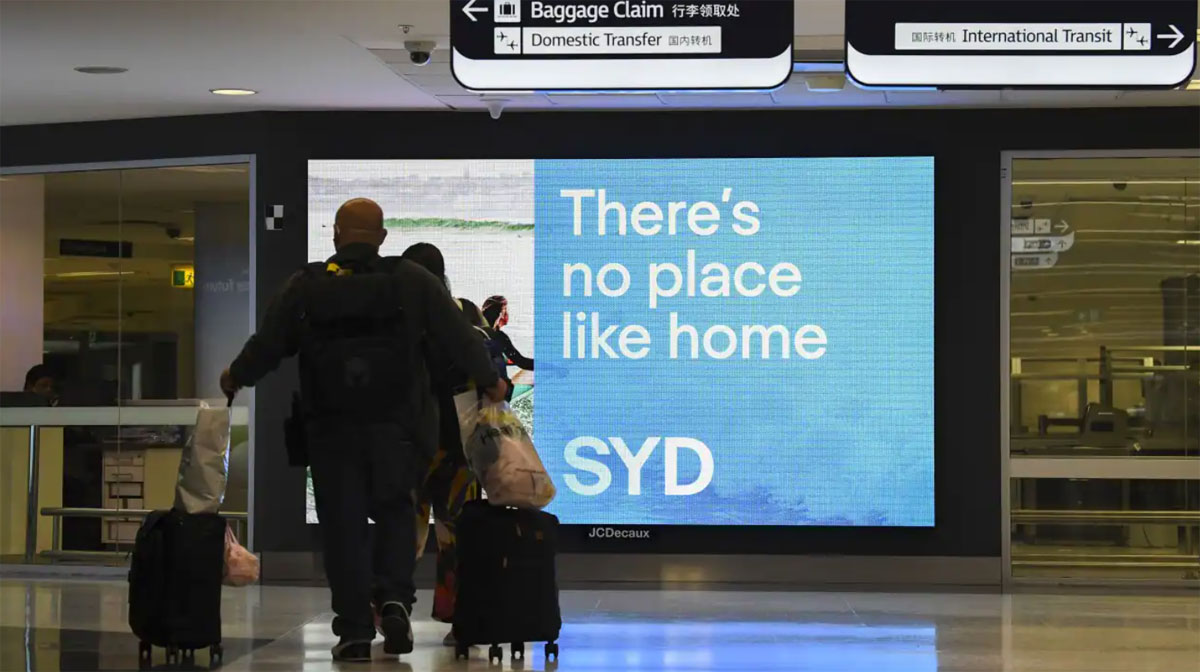
Many individuals born outside of Australia are granted citizenship and permanent residency. How to bring my parents to Australia is another concern following their arrival.
Though it can seem straightforward, the load is greater than it seems. Of course, you can always ask your parents to visit and temporarily occupy your home with a visiting visa. If your parents want to spend more time with you, are retiring, or have a kid, you may want to extend their stay in the country. It is critical to be aware that a few Parent Visa alternatives are available.
Need For A Parent Visa
Parents of Australian citizens, permanent residents, or qualifying New Zealand citizens may live permanently in Australia thanks to the Parent Visa. Contributory Parent Visas and Non-Contributory Parent Visas are the two types of parent visas available in Australia. The fees charged and the benefits level or protection your parents receive from the Australian government differ.
The most crucial decision you can make is which visa option is ideal for parents in Australia. If you choose the wrong visa, you could experience a lot of worry and more significant issues. The correct visa option will allow your family to live together in comfort and safety.
Fundamental Requirements For A Parent Visa
Requirements For Sponsors Of Parent Visas
Choosing The Best Parental Migration Options In Australia
Your parents can visit Australia to meet you on a visitor visa 600 for a short while, but if they want to live there for an extended period, they must need a valid substantial visa to support their stay. You must ascertain the best visa for parents to stay in Australia for which they qualify and whether they meet all requirements for being regarded as an eligible applicant. You should remember that Australia separates the permanent parent visa option based on retirement age. So, one of the things you must consider is whether or not your parents have reached the Australian legal retirement age.
The following visa subclasses are options to consider if they reach pension age:
If not, they have the following choices as well:
Parent Visa Options In Australia
There are many options available for you to apply for. These options include protecting your parents with various advantages, such as government-funded healthcare or getting the chance to work and study in Australia. Let us discuss these visa options:
1. Contributory Parent Visa
Contributory Parent Visas allow you to move to Australia with your child as a permanent resident while offering the option to later apply for citizenship. Due to the significant amount of money that must be donated at the time of application—roughly AUD 40,000 for the primary applicant—these visas are “Contributory” visas.
The expedited processing of Contributory Parent Visas makes them more appealing than their competition. Within four to five years, you should have a visa.
Parents of Australian residents who are not pensioners may be granted one of the following types of Contributory Parent Visas:
This visa has a two-year maximum validity period, and then you can apply for a permanent visa. You can work and study there. But you can’t prolong your stay; you must go for the 143 to do so.
This category of visa is perpetual. Either apply straight for this visa or first apply for Subclass 173 and then switch to 143 visa.
a. Visa Subclass 884
With the help of this temporary visa, you can visit Australia for two years before applying for a permanent one.
b. Visa subclass 864
The Contributory Aged Parent Visa is now available permanently. You can apply for it or move from the 884 to the 864.
2. Non-Contributory Parental Visas
They take a very long time to process—between 20 and 30 years—even though the fee is substantially smaller, and they result in permanent residency (and, after a few years, citizenship)!
Permanent residency is possible with the parent visa subclass 103. The prerequisites for this visa form are comparable to those for contributing visas. However, the cost is substantially cheaper, but the wait time (up to 30 years) is much longer. Additionally, you typically can’t process your application while you are in Australia.
It could take up to 30 years to obtain permanent residency in Australia because the Aged Parent Visa Subclass 804 is non-contributory. However, you have to travel to Australia to apply for the visa; while there, you’ll receive a bridging visa that will allow you to remain there legally while your application is being considered.
Conclusion
Making a choice is challenging whether a visa is the best choice for your parents’ trip to Australia. Depending on your parent’s country of origin and the length of their stay in Australia, you have a few alternatives to decide which visa to apply for to let them visit.
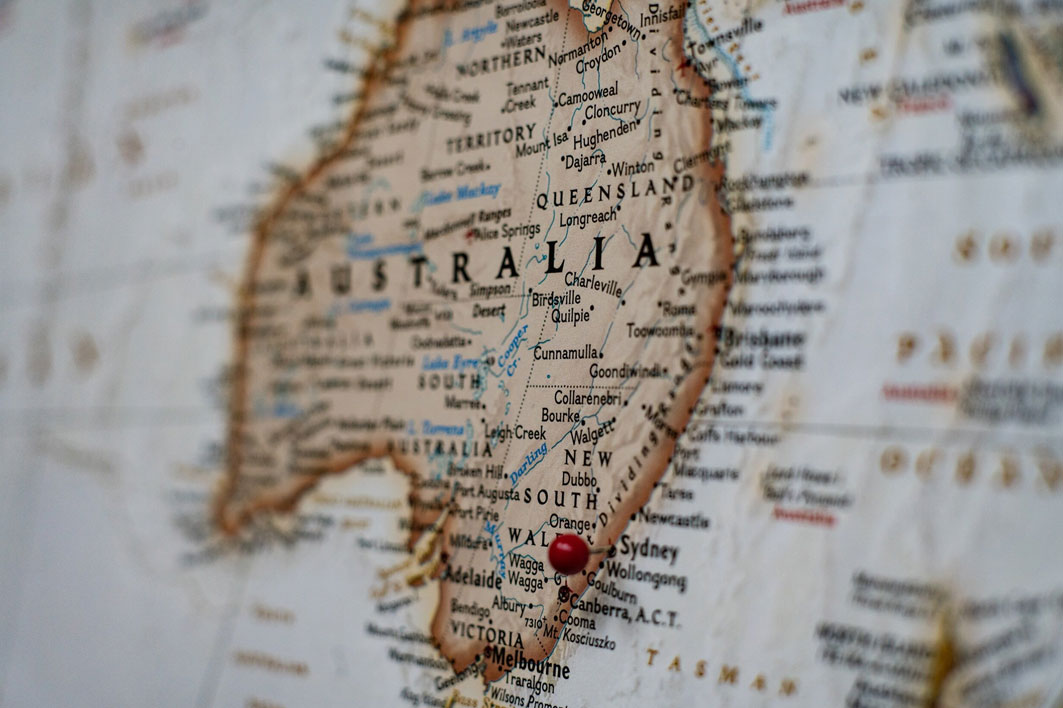
If you are interested in applying for a general skilled migration visa to Australia, it is important to have a good understanding of the skilled visa options and how the migration points test works, so that you can maximise your chances of being eligible to apply for a skilled visa.
A general skilled migration visa is an option available to skilled workers who are seeking to qualify for a skilled visa independently, or under a state or family sponsorship. It is an alternative to an employer sponsored visa.
One of the key criteria to qualify for a general skilled migration visa is the points test (a criterion that does not apply to employer sponsored visas). This is often the most challenging aspect for prospective skilled visa applicants to overcome when seeking an invitation to apply for the relevant skilled visa.
If you are considering applying for a general skilled migration program visa, an important concept to understand is the Expression Of Interest (EOI).
If you are considering applying for a general skilled migration visa, it is important to be aware that for certain visas in this visa class, you will first be required to lodge an EOI with the Department of Home Affairs (the Department) through Skill Select. The EOI is not a visa application, but rather, it is the process by which you can express your interest in applying for the relevant skilled visa (It’s important to note, that there is NO fee to submit an EOI).
This requirement applies to the following skilled visa subclasses:
Let’s take a brief look at each of these visas below:
The ‘subclass 189’ is a federal sponsored visa that grants automatic permanent residence in Australia. It is subject to nil visa conditions or obligations. For this reason, it is often considered to be the most flexible of the skilled visa options available.
A subclass 189 points-based visa allows you to live and work in any state or territory permanently.
The ‘subclass 190’ is a state/ territory sponsored permanent residence visa. It is another points-based visa for which invitations are issued throughout each month by individual states and territories. One of the benefits of applying for state nomination is that you will be granted an additional 5 points.
An important aspect to consider, which does not apply to the subclass 189 visa is that there is an added step in the application process. In this case, you must also apply for nomination approval to a state or territory government. Only upon receipt of an invitation from the relevant state or territory to which you apply can you then apply to the Department for the visa itself.
Your obligations as a subclass 190 visa holder are that you must commit to your nominating jurisdiction’s obligations and commit to residing in your nominating State or Territory for two years from visa grant.
The ‘subclass 491’ is also a points-based state/ territory (or family) sponsored visa. It is a regional visa with a term of five years. The Department issues invitations for family sponsored EOI applications only (in invitation rounds). Invitations for state sponsorship are issued by individual states and territories throughout each month. This will grant you an additional 15 points for the nomination.
Being a provisional visa, this means it provides a pathway to permanent residence in Australia with the Subclass 191 Permanent Residence (Skilled Regional) visa, subject to meeting specified requirements.
Be mindful that as a subclass 491 visa holder, you must abide by visa condition 8579, which requires you to live, work and study in a designated regional area of Australia. For migration purposes, most locations of Australia outside of major cities (Sydney, Melbourne, Brisbane, Perth, etc.) are classed as regional areas.
If your EOI is successful, you will receive an invitation to apply for the visa, as specified in the invitation letter. This then enables you to proceed with lodgment of your visa application (provided you meet all other visa lodgment and visa grant requirements).
Please note, the below State and Territory program updates is a general overview only. It does not take into account any of your personal circumstances. You must check the State/Territory information carefully to ensure you can meet all the requirements for nomination.
Australia is currently facing a shortage of skilled migrants to fill workforce demands. In response, states and territories have been easing the conditions of their visa programs to help attract skilled workers from overseas.
Below is the monthly update for some of the State and Territory opportunities available.
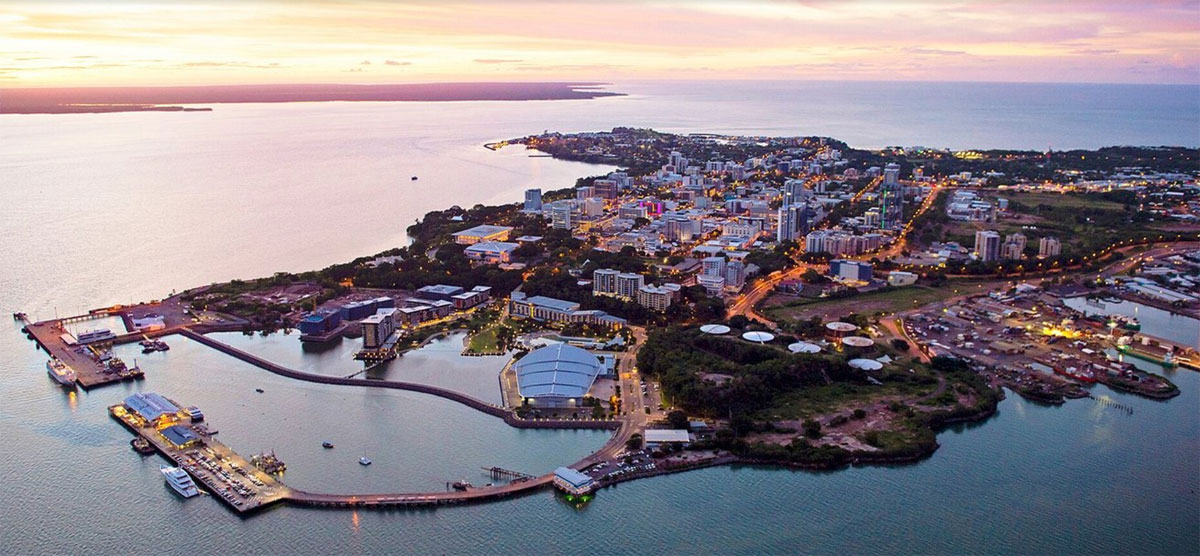
Program Status Update
UPDATE: NT GSM nomination applications for 2023-24 now open for subclass 491
The NT Government have begun accepting new applications for nomination under the Skilled Work Regional (Provisional) subclass 491 visa program.
Applications are assessed under new eligibility criteria as published on the NT website.
A summary of key changes to eligibility criteria are as follows:
Please see the full eligibility criteria.
Onshore applicants should make their applications well ahead of any visa expiry dates. Those who have visas expiring should seek professional advice on their visa options and ensure that they remain lawful during their stay in Australia.
It is the applicants’ responsibility to ensure that they meet visa eligibility criteria, including maintaining valid skills assessments and English test results.
People residing offshore are eligible to be considered for Northern Territory (NT) nomination. Invitations to apply for Northern Territory nomination will be via the ranking system.
The ‘Northern Territory Offshore Migration Occupation List’ identifies the occupations in current demand in the Northern Territory. This List is important if you want to apply for Northern Territory nomination for either a:
The ‘Northern Territory Offshore Migration Occupation List’ is only applicable for those applying for NT nomination from outside Australia, under the Priority Occupation stream.
Please note: The Northern Territory government has advised that offshore applicants will generally only be offered a Northern Territory nomination for a subclass 491 visa. Subclass 190 nominations will only be offered in exceptional circumstances, such as cases where the applicant has strong connections to the NT.
The NT advises eligible applicants to apply as soon as they meet the eligibility criteria. To receive a nomination from the NT Government, you must:
Before submitting an EOI for The Northern Territory, applicants should check that they meet all eligibility requirements.
For a further explanation, see the Frequently Asked Questions page on the Northern Territory Government website.
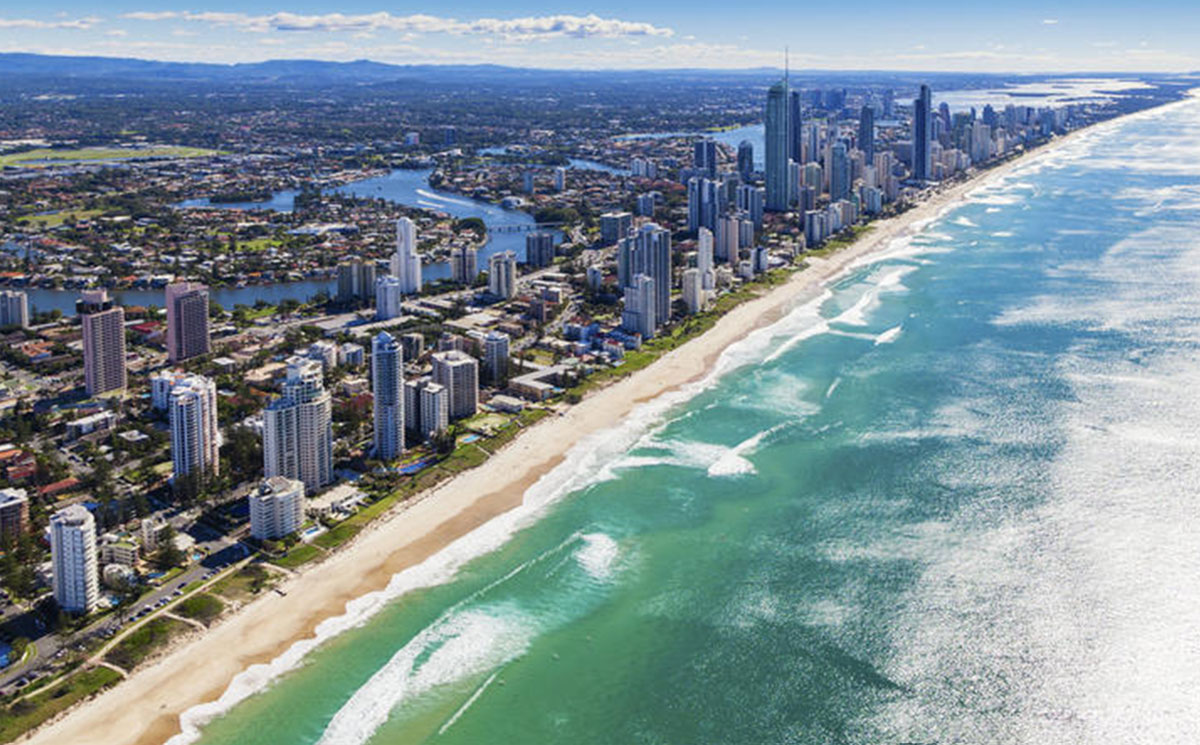
Program Status Update
To manage Queensland’s COVID recovery response, applicants currently residing offshore are now able to apply.
Depending on your occupation and situation, there are two state nomination options available for skilled migrants through Queensland.
For Queensland state nomination, prospective applicants must meet the Department of Home Affairs requirements, state-specific occupation requirements and have skills in an occupation that is available on the Queensland Skilled Occupation List.
You may undertake employment once onshore in Queensland through:
Offshore applicants meeting the minimum published requirements are eligible to lodge an Expression of Interest (EOI).
NOTE: The 2023 – 24 program opened on 5 September 2023. Migration Queensland will only consider EOIs lodged on or after 5 September 2023 – updated EOIs will not be considered.
Migration Queensland criteria requires you to:
The agency also requests all applicants to ensure they have carefully read and understood the new criteria relevant to their stream or pathway, and that they meet the criteria before submitting an Expression of Interest (EOI).
The 2023-24 Skilled Migration Program will be open to both onshore and offshore applicants and provide pathways for skilled workers, graduates, and small business owners.
Before submitting an EOI for Queensland, applicants should check that they meet all eligibility requirements.
For a further explanation, see the Frequently Asked Questions page on the Queensland Government website.
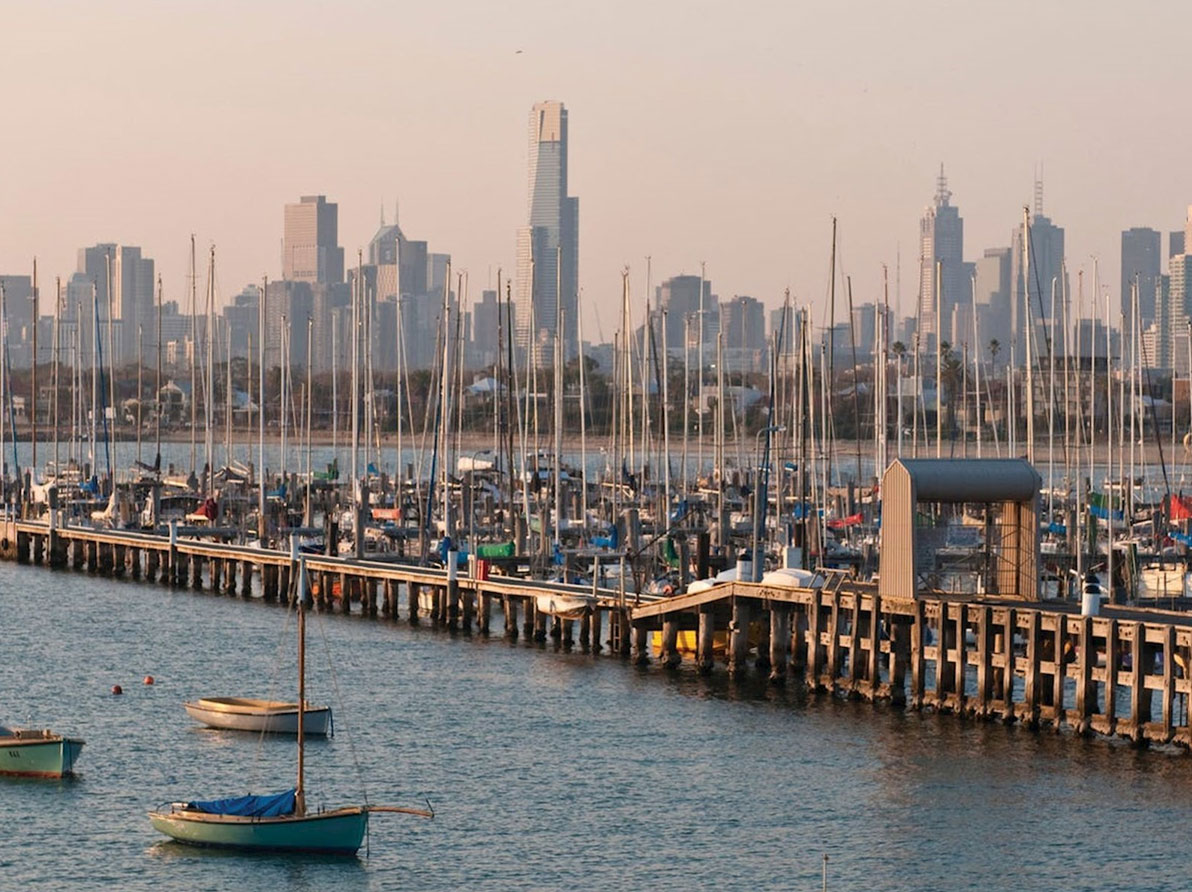
Program Status Update
Open to offshore applicants, the program provides skilled migrants with a pathway to permanent residency in Victoria. The skills that successful applicants bring to Victoria benefits employers and the broader Victorian economy.
The program provides two visa pathways:
As with previous years, applicants will first need to submit a Registration of Interest (ROI) and then be selected on competitive merit to apply for visa nomination.
NOTE: If you submitted a subclass 491 ROI for the 2022-23 program, you must submit a new ROI for the 2023-24 program.
If you submitted a subclass 190 ROI for the 2022-23 program, you do not need to submit a new ROI for the 2023-24 program. You should ensure that all information in your ROI is still correct.
Both onshore and offshore applicants are eligible to submit a Registration of Interest (ROI) for both the subclass 190 and subclass 491 visas.
Your ROI will remain in the system for selection until it is withdrawn, selected or the program year ends.
Before submitting an ROI for Victoria, applicants should check that they meet all eligibility requirements.
For a further explanation, see the Frequently Asked Questions page on the Victoria Government website.
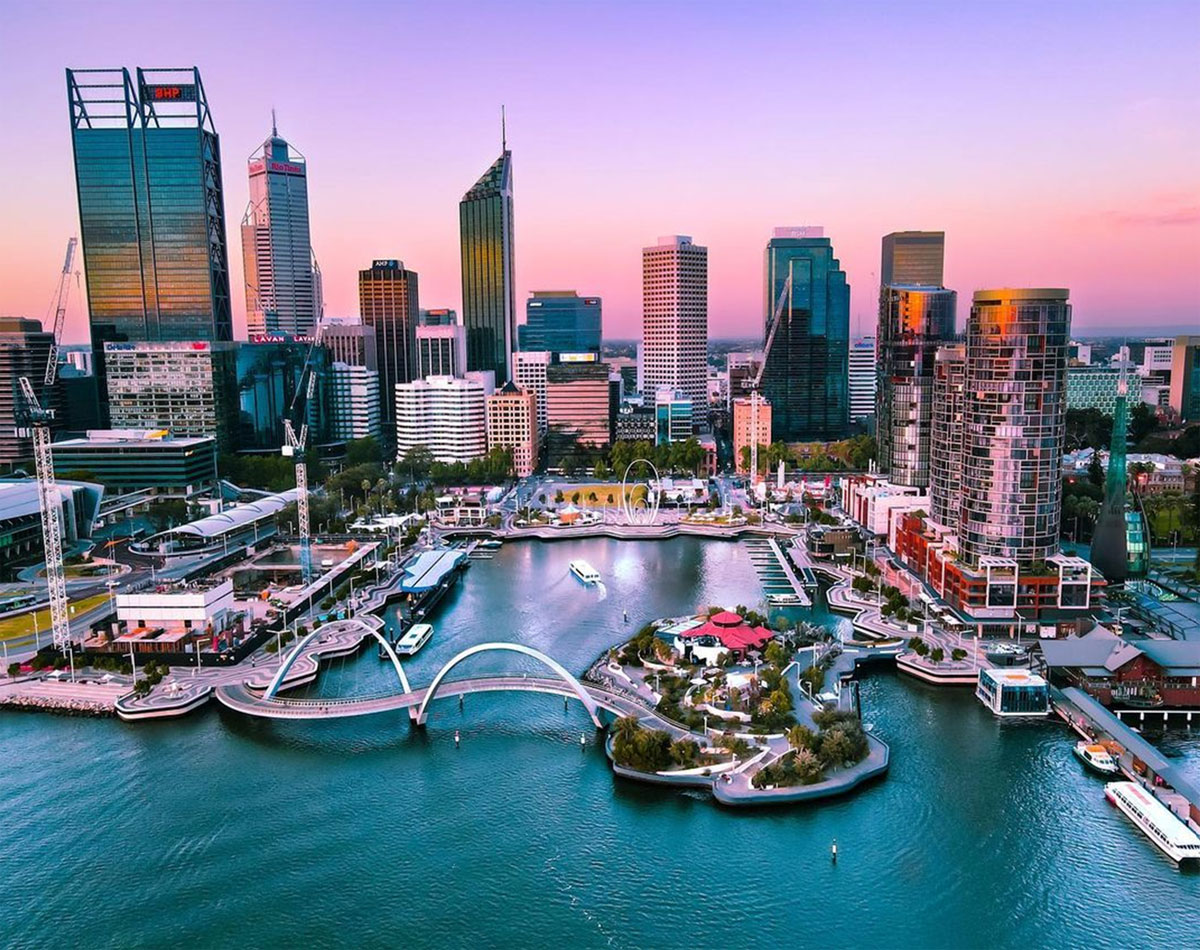
Program Status Update
People residing offshore are eligible to be considered for Western Australia (WA) State nomination. Invitations to apply for WA State nomination will be via the ranking system.
The Western Australian Skilled Migration Occupation List identifies the occupations in current demand in Western Australia. This List is important if you want to apply for Western Australia nomination for either a:
Please note that to be eligible for an invitation in the WA State Nominated Migration Program, you must meet both:
Before starting your application, you will need to check whether your occupation is available on either the WA Skilled migration occupation list (WASMOL) Schedule 1 or 2, or the Graduate occupation list. You can search for your occupation here. (The occupation list search bar is located under the heading ‘Eligible Occupations’.)
Features of the WA 2023-24 State Nominated Migration Program:
Before submitting an EOI for Western Australia, applicants should check that they meet all eligibility requirements.
For a further explanation, see the Frequently Asked Questions page on the Western Australia Government website.

Program Status Update
The ACT Critical Skills List identifies the occupations in current demand in the ACT. This List is important if you want to apply for ACT nomination for either a:
The ACT Government will update this list every four months to make sure that the ACT Skilled Migration Program adapts and responds to the evolving critical skills needs of the ACT economy.
The Canberra Matrix is weighted to ensure that applicants who will make a positive economic contribution to the Territory and/or have demonstrated a genuine commitment to the ACT are more likely to be ranked and invited to apply for ACT nomination.
*ACT nomination does not guarantee a migration outcome. You must still meet the Department of Home Affairs criteria.
Every month, a certain number of nomination invitations are available (prorated on the annual allocation) to those working in the highest ranked Matrix in each occupation.
You can view the ACT’s most in-demand skills for skilled migration by consulting the ACT Critical Skills List.
Before submitting an EOI for The Australian Capital Territory, applicants should check that they meet all eligibility requirements.
Once you’ve submitted a valid Department of Home Affairs Skill Select EOI, follow the ACT Government Process to apply for ACT nomination.
For a further explanation, see the Resources page on the ACT Government website.
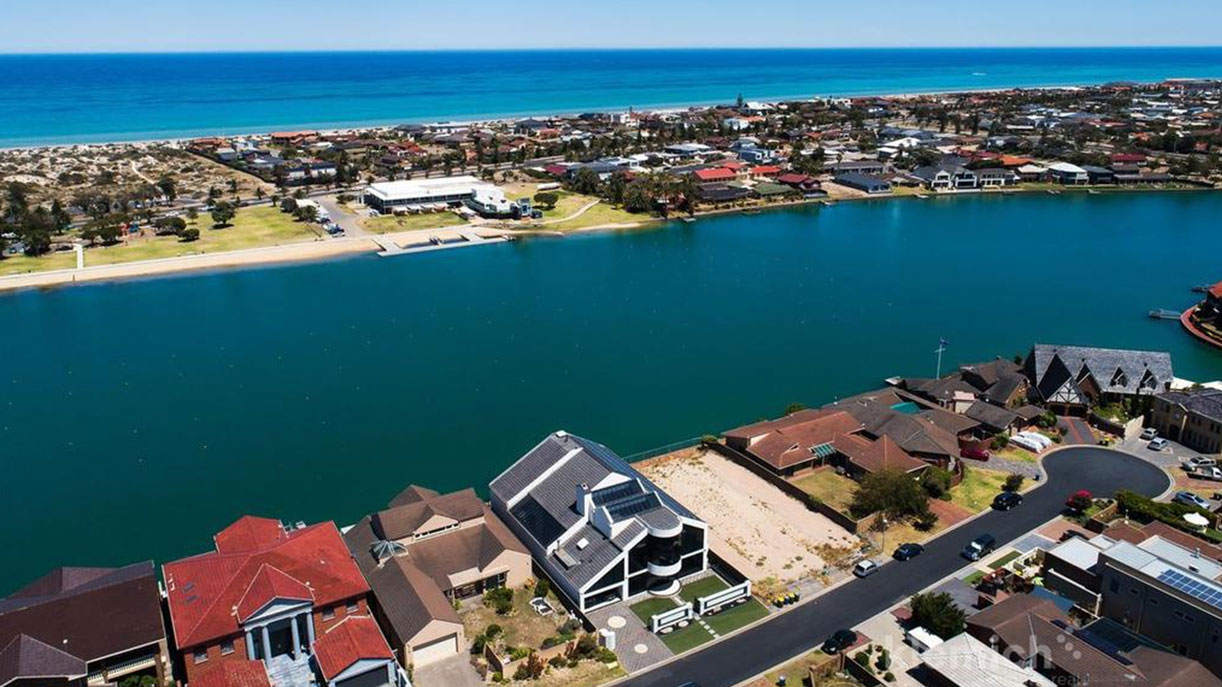
Program Status Update
To manage South Australia’s COVID recovery response, applicants currently residing offshore are able to apply.
Depending on your occupation and situation, there are two state nomination options available for skilled migrants through South Australia.
For South Australian state nomination, prospective applicants must meet the Department of Home Affairs requirements, state-specific occupation requirements and have skills in an occupation that is available on the South Australian Skilled Occupation List. Offshore applicants meeting the minimum published requirements can now lodge an Expression of Interest (EOI).
There is an enormous range of occupations on South Australia’s Skilled Migration Occupation List in a range of industries – search for your occupation here.
South Australia will select offshore applicants to apply for state nomination from those who have submitted an Expression of Interest (EOI) through SkillSelect. Offshore applicants will not need to lodge a Registration of Interest (ROI) for this year’s program. South Australia will be nominating offshore applicants from over 250 occupations on South Australia’s Skilled Migration Occupation List. To be eligible, ensure all the information in your SkillSelect EOI is up to date and you have selected South Australia as your first preferred state or territory to move to in Australia.
South Australia will be assessing candidates on merit by the following factors, within their nominated occupation:
Before submitting an EOI for South Australia, applicants should check that they meet all eligibility requirements.
For a further explanation, see the Frequently Asked Questions page on the South Australia Government website.
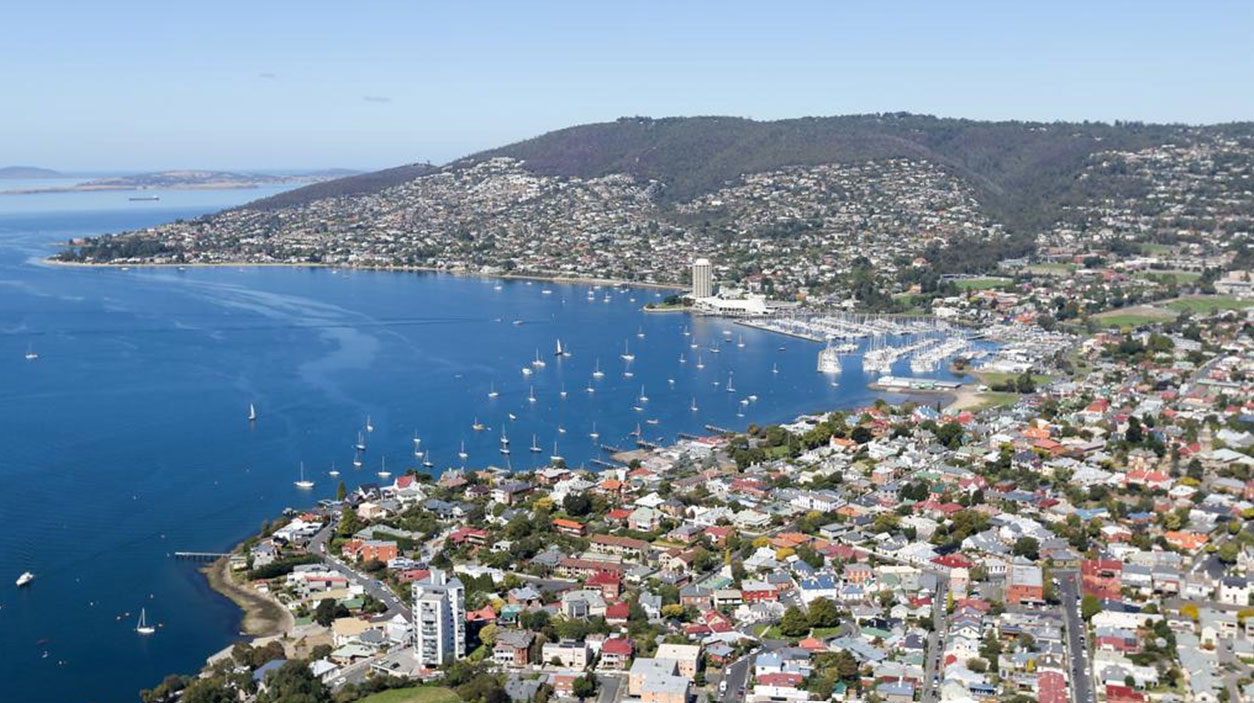
Program Status Update
Working in Tasmania
The two state nomination options available for skilled migrants through Tasmania are:
The Tasmanian State Nomination Skilled Migration Program supports Tasmanian businesses and increases the state’s working age population. It does this by attracting and retaining migrants with skills genuinely in need by employers, or with the capacity to settle in Tasmania through skilled employment in the long-term, and business activities that will increase employment opportunities.
Tasmania’s skilled migration program is for people wanting to move to the state who have skills that Tasmania need. Skilled migrants are attracted to Tasmania because of the state’s enviable lifestyle, career opportunities, affordable housing, reputable schools and a globally recognized university.
The Migration Tasmania Application Gateway is now available for registrations of interest (ROI) and applications for skilled visa nomination from Tasmania.
Anyone seeking Tasmanian nomination for a Subclass 190 Skilled Nominated Visa or Subclass 491 Skilled Work Regional Visa must first register in the Migration Tasmania Application Gateway .
Before submitting an ROI for Tasmania, applicants should check that they meet all eligibility requirements for either;
ROIs submitted before 1 July 2023 will remain valid for the 2023-24 program year.
ROIs and applications submitted from 5 July 2023 fall under the new eligibility requirements.
In cases where new requirements are likely to be beneficial, candidates may wish to withdraw their current ROI and submit a new one. (There is no charge to submit a Registration of Interest)
For a further explanation, see the Frequently Asked Questions page on the Tasmania Government website.
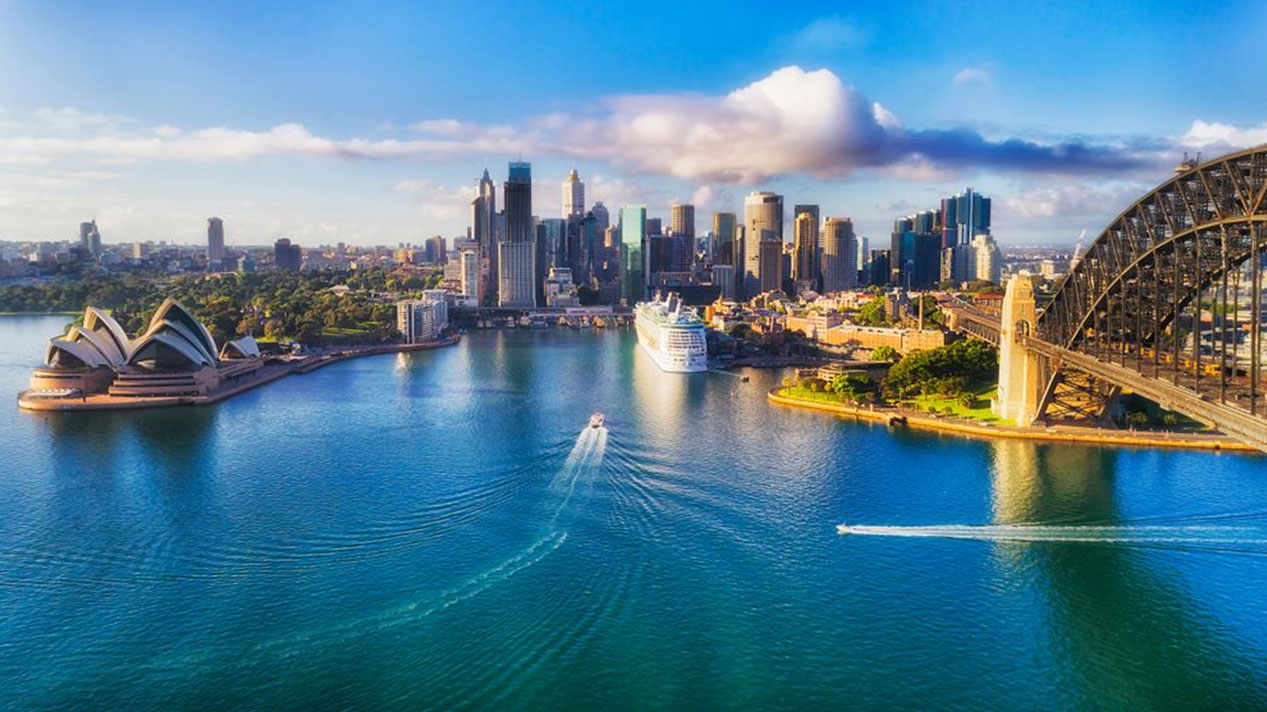
Program Status Update
The New South Wales government has invited applications from offshore migrants under the following nomination streams:
The NSW State Government announced that offshore applicants skilled in certain ANZSCO unit groups are still eligible for NSW nomination.
*Please note: Invitation rounds occur frequently throughout the financial year with no set date.
NSW invites and nominates Skill Select EOIs at the ANZSCO unit group level. To be eligible for NSW nomination (for either Subclass 190 or Subclass 491) you must be skilled in an occupation that both:
It is important to note that not all occupations within ANZSCO unit groups are eligible for the respective visa. It is the responsibility of the prospective migrant to ensure their occupation is eligible for the visa before obtaining a skills assessment.
For the 2022-23 financial year, NSW have introduced a new requirement regarding your Skill select EOI. To be eligible for NSW nomination, your Skillselect EOI must be for ONE visa and for NSW only.
This means that if your Skill select EOI has multiple visas and/or multiple states selected (this includes selecting ‘ANY’), your Skill select EOI will not be considered for NSW nomination.
The skills lists for 2023-24 are available on the Investment NSW website. Additional ANZSCO unit groups will not be added this financial year, however, the skills lists are reviewed annually.
Before submitting an EOI for New South Wales, applicants should check that they meet all eligibility requirements for either;
For a further explanation of how the skills list works, see the Common questions about skilled visas page on the NSW Government website.
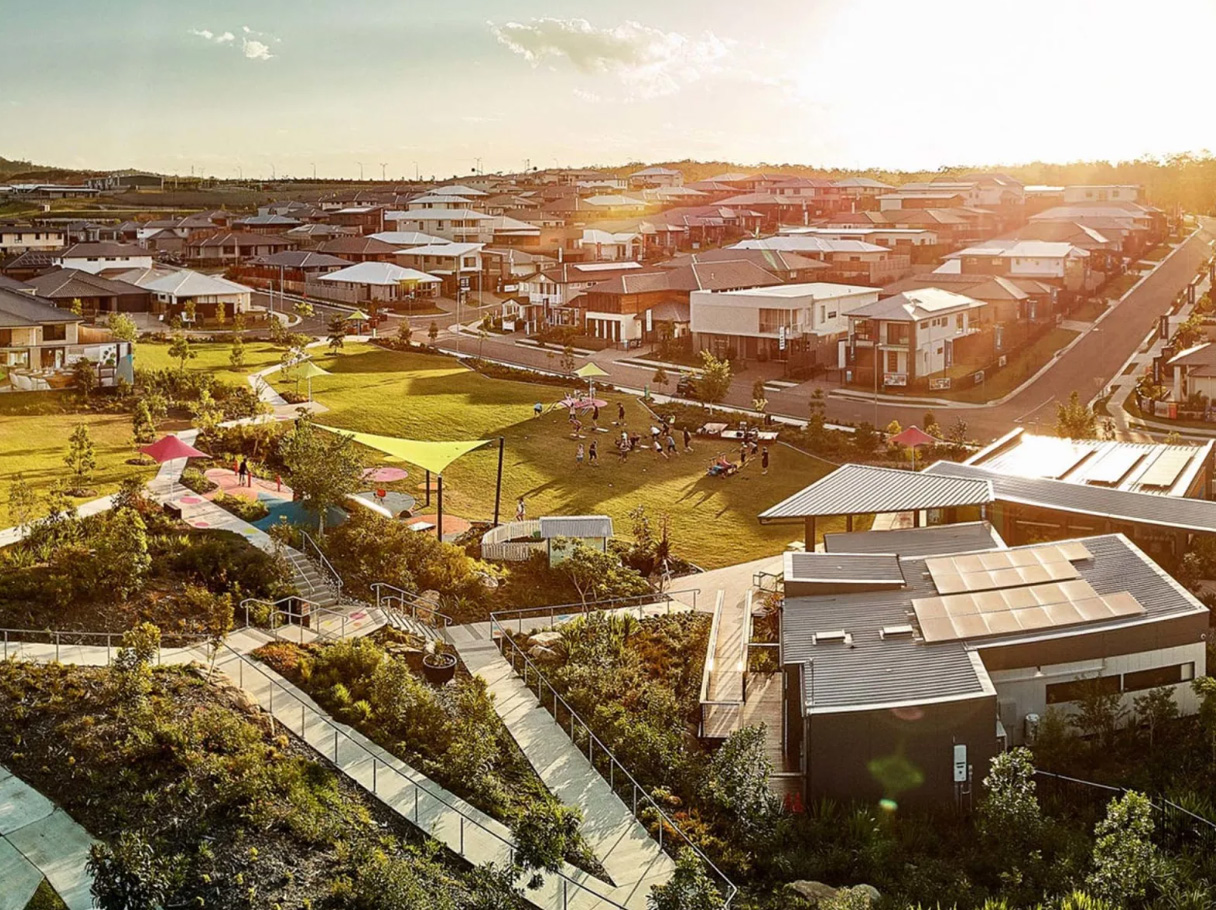
Three decades ago near Ipswich, Malaysian-born entrepreneur Maha Sinnathamby stumbled across an unloved 2860-hectare swath of ex-forestry land. His property developer business partner, Bob Sharpless, remembers it as “underwhelming” with nothing to recommend it as a potential residential location. “It was where elephants came to die,” Sharpless said. “There was just nothing there at all, except a prison and mental facility. No infrastructure at all.”
Sharpless and Sinnathamby purchased the block for $7.9 million, and – after a global study of emerging cities – set about “changing the trajectory of that part of south-east Queensland”.
In the process they established Springfield, Australia’s first privately constructed city and the first master-planned city since an initial sod was turned on Canberra 110 years ago. They created value out of dirt and are directly challenging the politically fraught idea that Australia is reaching the limits of its population capacity.
While a fragile major party consensus agrees on the need for a bigger Australia, cracks are emerging.
The Albanese government knows it has little choice but to accelerate flows of foreign skilled workers to paper over labour market shortages and fill growing job vacancies in sectors such as aged care.
Like a real-life game of SimCity, the Springfield city’s founders were granted extensive powers through an act of the Queensland parliament to design their own future, avoiding common battles with NIMBYs or overbearing councils.
They set aside land for crucial infrastructure, including a rail line to Brisbane, 11 schools within eight minutes’ drive of each other, a TAFE, a University of Southern Queensland campus, a Mater Private Hospital alongside a public hospital now under construction, 600,000 square metres of land for the city’s $15 billion in commercial space, and leisure spaces including an AFL stadium, a prescient move given the code’s growing popularity.
These days the focus is on attracting high-tech businesses such as medical companies – all part of a strategy to create work near the city’s houses, new builds of which start at $450,000 and sell for as much as $3 million.
About 53,000 Queenslanders now call Greater Springfield home, but Sharpless insists the city is still less than halfway to reaching its designed capacity of almost 146,000, which would eclipse Darwin. Its total potential end value has been put at $88 billion, entrenching Sinnathamby’s position on the Financial Review Rich List.
Springfield is one of a handful of the nation’s fastest-growing cities, alongside burgeoning communities around Sydney’s new south-west airport, and Melbourne’s Tullamarine-Broadmeadows region. They represent the front line of Australia’s urban expansion, real-time experiments in how the country might accommodate a much larger population. And they demonstrate that despite considerable political tension over the nation’s ballooning numbers, and a dramatic shortage of housing stock, the country is still a long way from full.
The Springfield story suggests that when done well – with the right policy and institutional frameworks – the future is bright. It also highlights the role private sector investment will have to play.
In the absence of a higher birth rate or productivity growth – which means doing more with existing capacity across the economy – Australia will need an ongoing stream of working-age migrants like never before. Particularly as the population ages. Official numbers show there were about seven workers supporting each pensioner in 1975.
Today, the number has shrunk to four, and there are predictions that will halve again by 2060.
Imagine for a moment the population was more than five times larger than today, at 150 million. Instead of 25 million, the country’s citizenry would be closer to Japan’s (at 126 million), and materially larger than that of Germany (83 million), France and the UK (about 67 million each).
Australia’s economy would have transformed from a remote global supplier of dirt and energy into a diversified powerhouse.
Alongside a vast consumer base, the country would have broadened local manufacturing, seen its enormous superannuation savings form the core of a deep and liquid global capital market, and confirmed its geostrategic heft as one of the primary defenders of western democracy in the Indo-Pacific. Nobody invades countries with militaries backed by a tax base of more than 100 million people.
“With population comes scale, and scale is a tremendously positive economic force,” says economist Steven Hamilton. “The reason Australia does not have a car industry is not because there’s something about Australia that is unusual or that cars are cheaper to build in China. It’s that Australia does not have the scale to support a car industry.”
According to the Grattan Institute, increasing the size of permanent migration intake to 200,000 from 160,000 could offer a $38 billion boost to federal and state governments over the subsequent decade. That’s because young, skilled migrants contribute more to the fiscal pie than they consume.
Prime minister Kevin Rudd suggested in 2009 that it is “good news that our population is growing”. “I think it’s good for us, it’s good for national security in the long term, it’s good in terms of what we can sustain as a nation.”
“I do not believe we can safely guarantee the nation’s future in this deeply uncertain world unless we become much bigger than we are,” Rudd wrote in his 2021 book The Case for Courage. “Precisely how much bigger will be a matter for detailed research on what we will need for our future national capacity, although a figure of 50 million people should be within our reach for the second half of the century. That would begin to place Australia in the same league as France, the United Kingdom and, in time, Germany.”
Rudd believes that number would provide a minimum level of economic mass needed to “sustain our long-term social expenditure to support our ageing population”.
Treasurer Jim Chalmers’ May budget forecast an extra 1.5 million migrants over five years, including a record 400,000 in 2022-23 and 315,000 in 2023-24.
Rudd’s future is the one we’re hurtling towards. The government’s latest population statement – released during the traditional summer holiday silly season – shows the population is expected to reach 30 million within 10 years, or by 2033. Chances are high that even that prediction ends up surprising us on the upside.
Case in point – Australia’s population in 2050 was forecast to be 25.7 million in the first 2002 Treasury Intergenerational Report. By the time of the 2021 edition, that forecast was raised to 35.3 million. “That’s a difference of more than one-third,” assistant Minister for Treasury Andrew Leigh noted. “Put another way, we’ve now got more people in Australia than the first intergenerational reports thought we’d have in 2050.”
Population growth will not only determine Australia’s future economic weight but, given its geography, will become a crucial factor in whether it remains strategically relevant to its closest neighbours.
A larger population would not necessarily mean Australia would need to maintain a larger military either. “Australian defence is not particularly labour intensive. It’s capital intensive. So the point here is to grow the tax base.
With a growing tax base, it’s much easier to expand defence if you need to than when you have a stagnant population and tax base.”
Even if the country grew to accommodate 150 million people, it would be sparsely populated by global standards.
The number of Australians per square kilometre would jump from three to almost 20 – which is still about half the average of the world’s wealthiest nations. It is also tiny compared with Japan’s 346 people per square kilometre, the UK’s 277, and Germany’s 238, according to World Bank data.
Even if you found a way of putting the entirety of Australia’s future mega population into Victoria alone, the state would have a lower density – at 660 people per square kilometre – than Singapore (7919) and Monaco (18,215). The real goal would be to encourage growth where it now does not exist, even while making current population centres more efficient, both in terms of land but also productivity.
Sydney, Melbourne and Brisbane would expand to attain “megacity” status – probably with populations in the 10 million to 15 million range. Their inner and middle rings would have become high-density urban employment growth centres. Their boundaries would have blended into larger agglomerations. Brisbane might stretch to the Sunshine Coast, westwards to the Darling Downs and southwards into northern NSW.
Sydney would run from Newcastle to Wollongong via the eastern edge of the Blue Mountains. Melbourne might become the midpoint of a Geelong-to-Ballarat super triangle. And Australia would need to accommodate a further 500 fully grown Springfields.
Sharpless says the secret to building new cities is to avoid indiscriminate development. Springfield works because it has a master plan that gives people certainty of what would be around them, particularly public transport, he says.
“We’ve got a large country, but a very underwhelming population,” says Sharpless. “So there’s a lot of potential capacity in the country but obviously, it’s constrained basically by infrastructure – the connectivity that allows people to live in areas with the facilities they demand. It isn’t there. And that’s why the population is pretty much confined to the nice coastal places that are close to the amenity that’s already been created.”
And although previous expansions leveraged the emergence of cheap automobile transport to produce suburban sprawl, future generations would need the kind of integration that Europeans enjoy, with fast and well-connected infrastructure linking jobs with lifestyle.
That will mean a major retrofit of big cities. NSW Premier Chris Minns said in May that “we have to go up . . . Sydney can’t grow by adding another street to the western fringe of Sydney every other week.”
Either way, the country has little choice but to make the tough policy decisions that support a bigger nation, says Hamilton. “It’s not the case you can double the population overnight and everything will be OK,” he says.
“We need new cities, for smaller regional cities to be bigger, and for existing cities to be better managed. The worst possible outcome is throwing up your hands saying we can’t solve all of these policy problems, they’re too hard, so let’s shut the doors.”
Hamilton points out that America is the only big wealthy country on earth. “America became big from 1850 to the Second World War. And then they closed the tap and slowed to a crawl. We need to do all the policy stuff anyway, like liberalising land use regulation, transport, infrastructure. They’re no-regrets decisions. We should do them, and then we could double the immigration intake without problem.
“It would be all gravy.”

Chinese short-term migration to Australia is on track this year to overtake pre-Covid 2019, owing to improved economic relations, a glut of white-collar jobs and a boom in real estate, according to government data and analysts.
The number of Chinese nationals taking up short-term residence in Australia had reached 276,330 this year as of August, compared with 315,150 for all of 2019, and far outpacing what was seen during the immigration-hobbled pandemic years, according to Australian Bureau of Statistics figures.
That data largely reflects visa issuances for study and employment.
A warming of China-Australia economic relations this year is propelling many of the arrivals, analysts say.
“When countries have better relations, you will see that in the media,” said Kirsten Martinus, a graduate research coordinator with the School of Social Sciences at the University of Western Australia. “That would have a huge impact on migration.”
China-Australia ties nosedived in 2020 after Canberra called for an international probe into the origin of the coronavirus without consulting Beijing. China responded by imposing import tariffs on Australian barley, duties of up to 218.4 per cent on Australian wine, and a ban on cotton imports.
Some trade curbs have eased this year as the two countries held high-level meetings to repair ties. China still depends on Australia as a source of raw materials – especially iron ore – to supply its massive manufacturing bases.
Australia’s growing US$1.7 trillion economy is bringing Chinese investors on short-term visas, analysts say. The top draws are real estate and renewable energy, said Stuart Orr, head of the business school at the Melbourne Institute of Technology.
He noted that Chinese businesspeople in Australia are using “networks” in China to make investments. “It’s going up for sure – there are so many opportunities,” Orr said.
In the global property market, Chinese have picked Australia as their top preference in the current quarter, edging out former No 1 choice Thailand, according to data compiled by the real estate tech firm Juwai IQI.
The firm projects that third-quarter inquiries from China about Australia will be 76 per cent higher than in the second quarter, and 35 per cent higher than in the first quarter.
Approved property investments reached US$6.3 million in the 2020-21 fiscal year, the latest period available, government data shows.
Professional services firm KPMG’s foreign investment report, “Demystifying Chinese Investment in Australia”, indicated that 12 per cent of Chinese funds injected in the country last year went to renewable energy. Those investments reached US$170 million, up from US$19 million in 2021.
The utility firm State Grid Corporation of China, for example, co-owns a company that helps make biomethane out of organic waste in Sydney. Biomethane is an alternative to natural gas.
Some Chinese are reaching Australia to study after being “trapped” for years of online learning or to work in white-collar jobs such as accounting, software programming or civil engineering, Martinus said.
”We have a huge amount of jobs here but don’t have the people to fill these jobs“. Kirsten Martinus, University of Western Australia
Lesley Kang will reach Australia by year’s end for her final year of doctoral study, visa officers willing. She has signed up for a University of Melbourne programme linked to her enrolment at Fudan University in Shanghai.
The 23-year-old native of China’s Inner Mongolia autonomous region would consider staying in Australia for work because of its safety, consumer prices and climate, compared with other Western nations.
“I’m looking at both places,” Kang said. “Whether I stay there or come back to China, it’s all a good opportunity.”
”We have a huge amount of jobs here but don’t have the people to fill these jobs,” Martinus said.
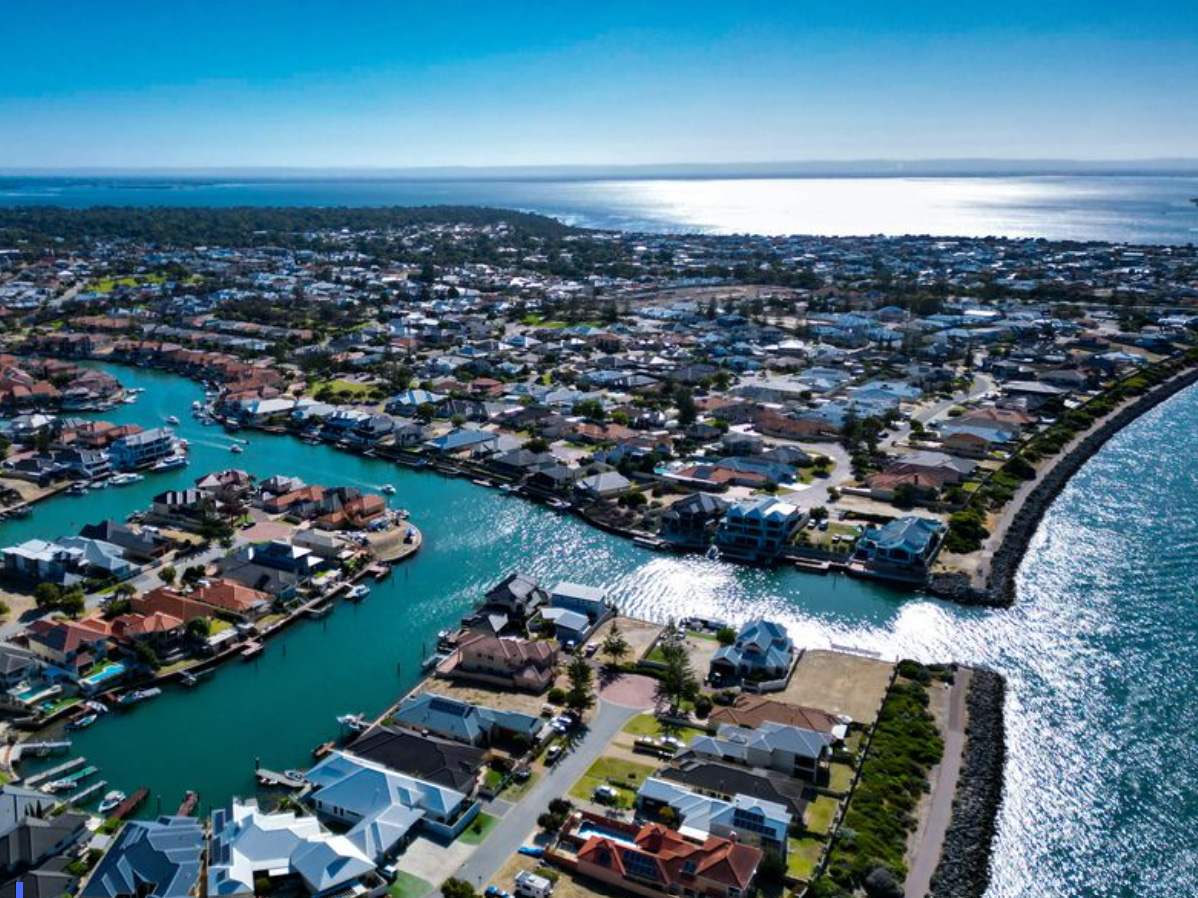
Mandurah in Western Australia has been crowned the Top Tourism Town in Australia for the first time ever at Australia’s Top Tourism Town Awards 2023.
The small city on the south west coast of Western Australia, about an hour’s drive from Perth, is known for its stunning waterways and coastline, internationally significant wetlands.
The Estuary and Peel Inlet are also considered some of Australia’s most spectacular playgrounds for boating, fishing and wildlife watching.
“It offers a relaxed atmosphere making it the perfect holiday destination,” Shaun de Bruyn, Chairman Australia’s Top Tourism Town Awards, said after the ceremony held at Parliament House in Canberra on Thursday.
“Australia’s Top Tourism Town Awards 2023 are part of the Australian Tourism Awards series, with a focus on promoting regional tourism in Australia – this is the chance for our regions to really claim the spotlight.
“They promote not only the individual towns themselves, but also the positive impact tourism has on regional communities.”
Winners are determined by a state and national level voting process combining people’s choice votes and an industry judging panel.
Coming in second place with a silver award for top tourism town was Ballarat, Victoria, with Caloundra in Queensland taking out the bronze.
All up, there were three categories awarded, with winners also crowned for top Small Tourism Town and top Tiny Tourism Town.
Queenstown in Tasmania, won Gold in the Small Tourism Town category. This remote West Coast town is home to a vibrant arts precinct, century-old steam train and breathtaking mountain views.
Airlie Beach, Queensland won silver and Sorrento, Victoria took out the bronze.
Meanwhile, the Tiny Tourism Town category was won by Dwellingup in Western Australia, a small town an hour and a half south from Perth. Dwellingup is considered a nature playground where mountain bike and hiking trails gently wind through the Darling Scarp.
Aireys Inlet in Victoria won the silver award in the tiny town category, with NSW’s only podium finish thanks to Huskisson winning bronze.
Tourism Australia congratulated all of the award finalists and winners for their hard work and ongoing commitment to Australia’s tourism industry.
“Tourism is the lifeblood of so many communities around the country and the Top Tourism Town Awards are a chance to acknowledge the contribution they have made to our visitor economy,” Executive General Manager of Corporate Affairs for Tourism Australia, Bede Fennell said.
“Tourism towns have helped to make Australia the welcoming and desirable destination it is today, and we thank these communities for all of their hard work and resilience over the past few years,” he concluded.
Earlier this year the top towns in NSW were announced with the South Coast dominating across all categories.
Berry and Huskisson both won gold in the Tiny and Small Town categories of the NSW Top Town Awards.
Meanwhile, Kangaroo Valley took Bronze in the Tiny Town category, and Ulladulla Silver in the Top Town category.
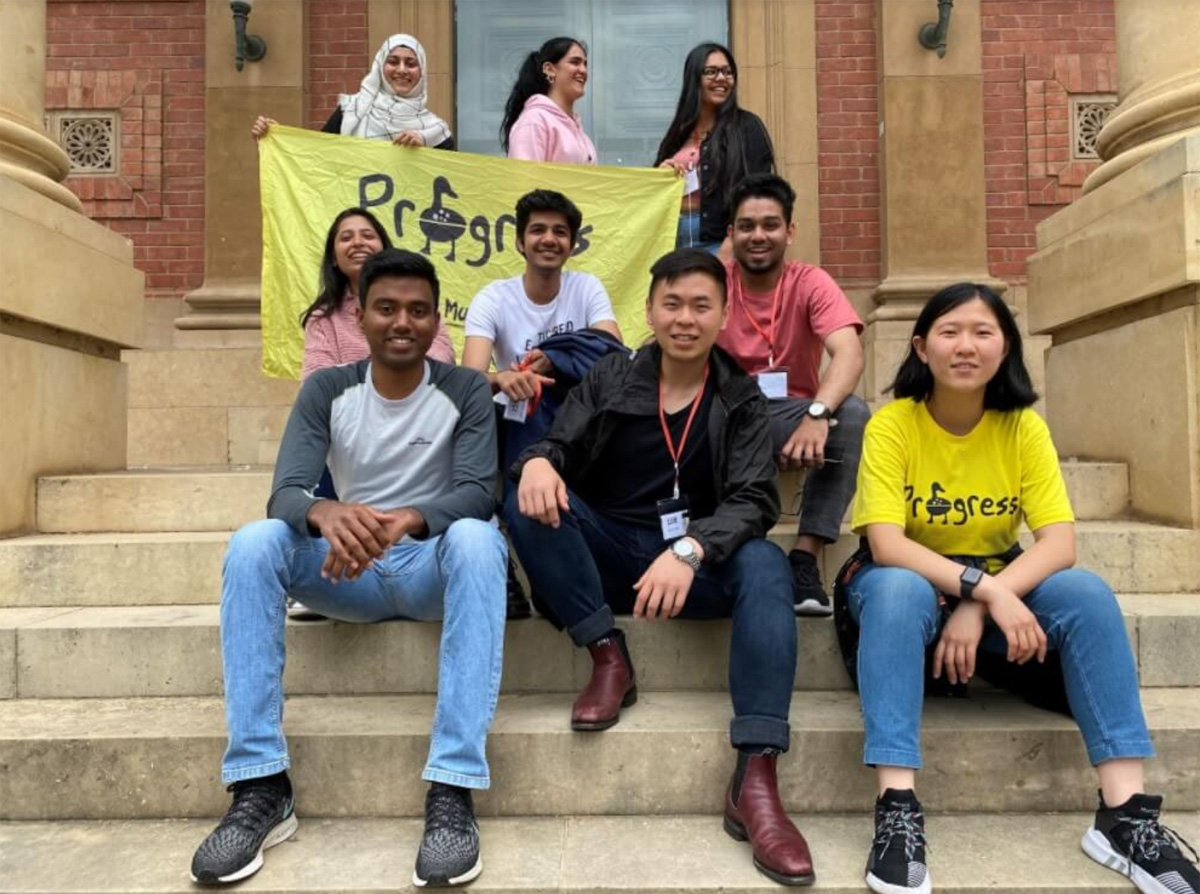
Australia is implementing new rules that prevent international students from enrolling in two courses concurrently during the first six months of their main course. The change is aimed at cracking down on education providers that exploit the concurrent enrolment policy to encourage students to switch institutions.
The government says that the new rules will help to ensure the integrity of the international education sector and protect students from exploitation.
The new rules do not impact students who are already holding concurrent enrolments. However, students looking to enrol in a second course concurrently after the first six months of their principal course of study will need to obtain approval from their education provider.
There are a few exceptions.
“For example, students will still be able to enrol concurrently in a course that is an approved component of a combined or double degree. Additionally, students who have a valid reason for needing to enrol concurrently, such as extenuating circumstances, may be able to obtain an exemption from the rules,” Saurabh Arora, CEO and Founder, University Living, explains.
Now, students wanting to pursue a second course alongside their main course will have to wait until they have completed at least six months of their first course. This could delay their graduation plans, and may also make it more difficult for them to find part-time work to support themselves.
“Students who are interested in pursuing a second course may also be concerned about the cost. Concurrent enrolment fees can be significant, and students may not be able to afford to pay for two courses at once,” Arora adds.
The new rules will also impact students who are planning to transfer to a different course after completing the first six months of their studies. If they are unable to find a suitable concurrent course, they may have to wait longer to transfer.
The Australian government has argued that the new rules are necessary to protect the integrity of the international education sector. They say that some students have been abusing the concurrent enrolment system to switch to cheaper vocational courses after arriving in Australia.
Between March 2022 and March 2023, the enrolment of international students in Australia showed significant variation. International students now account for around 33% of all students enrolled in Australian higher education.
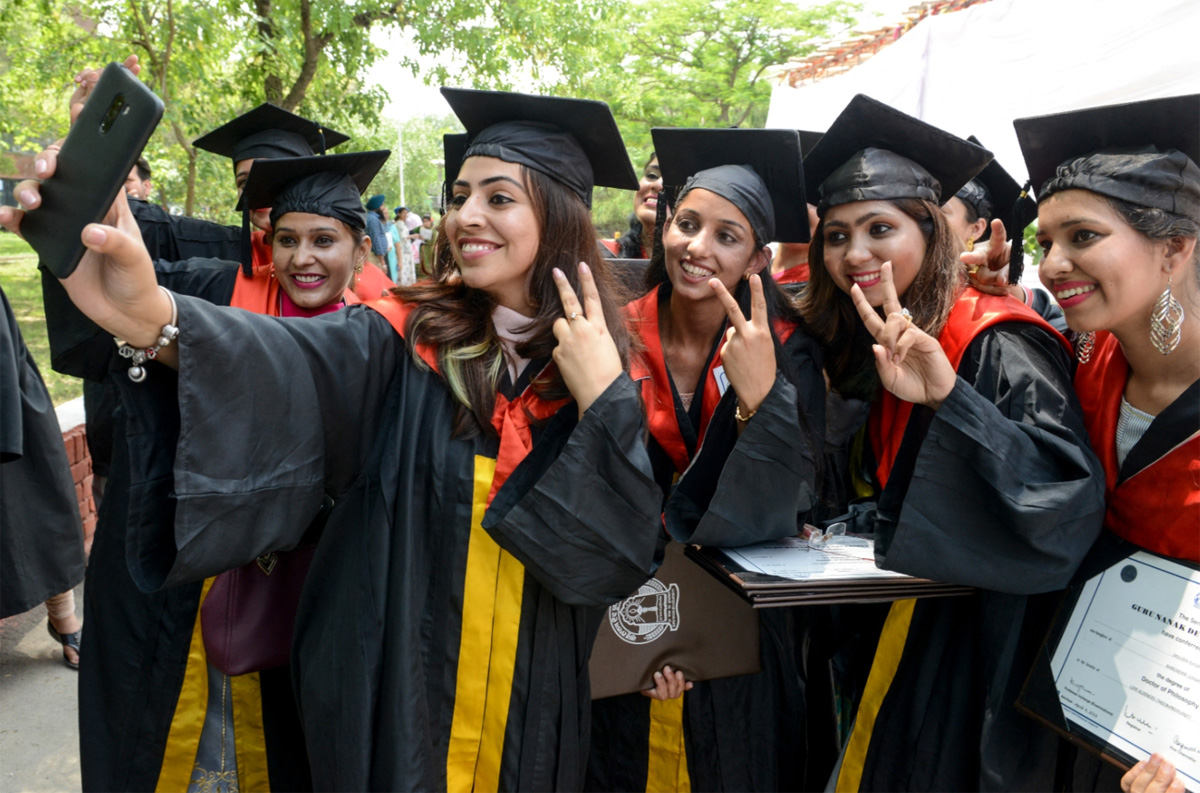
The number of Indian women going to Australia for higher education has been increasing, with 41% of women joining in the first intake of students this year. Monica Kennedy, senior trade and investment commissioner of the Australian Trade and Investment Commission, stated that the rise in numbers reflects Australia’s reputation as a safe and supportive destination.
Indian women going to Australia for pursuing higher studies has increased over time. This year, around 41 per cent of women have gone in the first intake of students. This data is outside of other streams like vocational education, which make for 33 per cent of the educational field in Australia.
Speaking to TOI, Monica Kennedy, senior trade and investment commissioner of the Australian Trade and Investment Commission(Austrade) said “It is heartening to see more girls choosing to study in Australia. The steady increase in the numbers is a recognition of Australia as a safe, welcoming and supportive destination. This is a part of the overall trend, where we are witnessing more young women choosing to fly to Australia for quality education, research and opportunities in global careers.”
According to the data shared, the percentage of women among Indians going to Australia for higher education had grown from 39% in 2019-20 to 45% in 2021-22, but fell to 41% last year.
Indian students are also showing growing interest in doing their under graduation (UG) from Australia. In 2014-15, UG students formed 20 per cent of the student cohort from India, while PG students comprised the remaining 80 per cent. In 2022, the ratio was at 30 per cent for undergraduate students and 70 per cent for the post graduation students respectively.
Last year, a total of 70,231 Indian students joined different colleges across Australia, taking the total number of Indians to 1,00,302. This year, around 47,751 students have joined during the first intake and more are expected to join soon, surpassing previous year’s count, Monica said.
“This time, we have reached pre-pandemic numbers. Students have recognised Australia as the first choice of destination and no longer the second one,” she said.
While admitting that there were visa issues last year, Monica further said the same have been sorted out and now the country has “one of the fastest visa issuing processes”. A full visa processing takes 10 days, she said.


Australian Minjee Lee claims 10th career LPGA title in a playoff at the BMW Ladies Golf Championship! South Korea. October 2023


Festival goers got to escape for a moment into their own wonderland as they explored the magical charm of over one million blooms at Australia’s Biggest Celebration of Spring – FLORIADE FESTIVAL! Parkes, ACT. October 2023

The MELBOURNE FRINGE FESTIVAL was a unique space for artistic self-expression linked to the life of the great city of Melbourne, where thousands of artists performed 400 plus events in over 160 venues to an audience in excess of 350,000 people! Melbourne, VIC. October 2023

The harbour city played host to ‘SXSW SYDNEY 2023’ which was a collision of creativity and culture, forming the center-point for change-makers over a week-long celebration as global creative professionals sought future industry trends, adventurous new ways of thinking, discovery and unrivalled networking opportunities! Sydney, NSW. October 2023


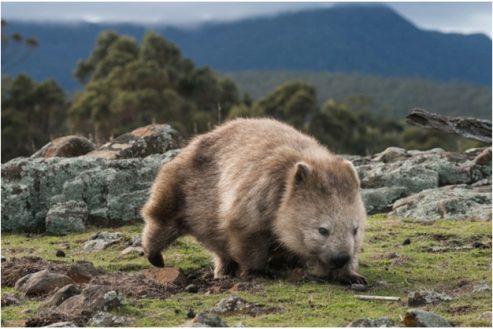

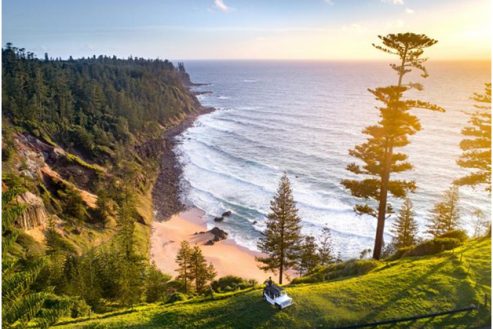
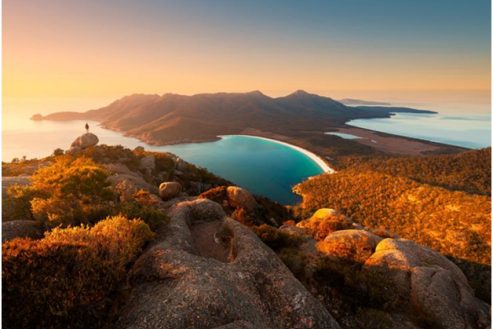
This Bulletin and its contents is for general information purposes only and should not be used as a substitute for consultation with professional advisors.
As legislation and travel requirements are constantly changing, we strongly recommend obtaining advice on your individual situation from a Registered Migration Agent. Please click here to book a consultation with one of our Registered Australian Migration Agents, located in Australia.






You can manage your membership and billing method by clicking here
Terms of Service
Privacy Policy
Copyright © 2025 Office of Immigration Australia, a private company registered in Australia. All Rights Reserved.